DIY Wet Felting Around Objects
Just when you thought wool could only be used in a few ways, I’m here to tell you that wet felting can not only be done on a flat surface, but can also be felted around an object! The process of felting continues to amaze me with all the ways you can manipulate the wool fibers. I’m going to show you one of those ways in this tutorial using The Felt Store’s Carded Felting Wool. For this demonstration, I used the F-11 - 100% wool - carded fiber making it easier to felt and manipulate.

Materials:
- Sticks that are approximately 12- 20 inches long with a thickness of ½ inch
- Carded felting wool
- Hot water
- Soap - clear or white
- Textured plastic sheet
- Screen mesh
- Sponge
- Towel or rag

In a previous tutorial – Wet Felting for Beginners – I showed you how to make a flat, wet felted sheet. Give it a read if you haven’t already or if you are new to wet felting. In the tutorial I show you the basics of how wet felting works by layering wool fibers and rubbing them together using just soap, hot water, and textured materials such as window screen mesh and plastic to help increase friction. Felting around an object uses the same principles, but instead of creating a flat sheet, we are forming the fibers to the object being felting around.
A nice little bonus for this project, we get to go out for a nature walk to pick up our desired sticks - or just step into your front/back yard for quick collection. Set your sights on sticks that don’t have any rough bark on them, since that will get all caught in the felt fibers. Sticks from shrubs and bushes do well for this purpose. You can ultimately choose any thickness or size you would like; just keep in mind the fiber you have on hand. For this tutorial, I used approximately 200 grams of the carded felting wool to cover all 10 sticks.
Now that you’ve collected enough sticks, let’s get to the tutorial!
Steps:
- With your station set up for wet felting, tear off wisps of the carded wool and lay them horizontally along the length of the stick. I’m doing each stick in sections, so you do not have to cover the whole length at first. Continue to tear off whisps for the next layer but lay them vertically on top of the previous layer. After you’ve made the bottom of what will essentially be a wool and stick sandwich, place the stick on top.

- Do the same horizontal-vertical wool wisp technique for the top “bun” of this felt sandwich he-he. Then just like in wet felting a flat sheet, pour a bit of your soapy hot water mixture over top the wool fibers until they are fully saturated.
NOTE: For your own safety, DO NOT use boiling water as you will want to work comfortably when felting with your hands.

- With your fingertips, begin to very lightly bring the overhanging fibers on top of the stick in towards the center. What this is doing is folding the excess wool over itself to encourage a snug fit for the stick as you wet felt.
TIP: Use a combination of back-and-forth, side-to-side and even circular motions to help accomplish this first step of wet felting.
NOTE: Do not rush this step! Take your time, be patient, and pay attention to the direction the fibers are moving and if they are tangling into each other – that’s what you want!

- Gradually pick up speed and increase the amount of pressure you’re applying. In this setup, I have a textured plastic sheet that I am working directly on top of. I use this to felt against once I’m at this step.


- Repeat Steps 1-4 to continue felting around the stick in sections. When moving on to the next section, be sure to slightly overlap it with the previous section so you can felt them together.
In this step I will show you how I felt around a fork in the stick.

Shown here is the stick’s fork sandwiched within the carded wool fibers. I also added additional fiber in between the fork so that there is enough to cover where the branch splits in two.

- Continue finishing off your wet felted stick the same way you’ve been doing thus far. Once both splits (or more) are felted, connect them to the felted fibers at the split by slightly overlapping the fibers and felting both sections together. It’s that easy!




And that’s how to wet felt around an object; in this case, sticks! This is a really fun and unique way to use carded felting wool to your advantage by making long lasting natural home décor you won’t have to swap out.
So go on and bring the beauty of the outdoors within for this cute and cozy all-natural home décor project! Feel free to drop a comment below on how it went or if you’d like to learn how to felt around another object in the future!
Until next time, happy felting!
 USA
USA CANADA
CANADA EUROPE
EUROPE
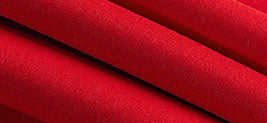
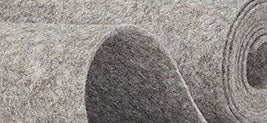

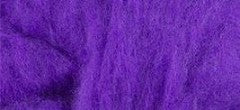
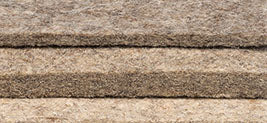
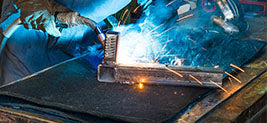
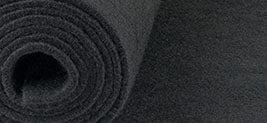
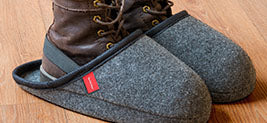
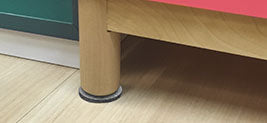
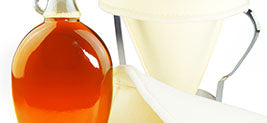
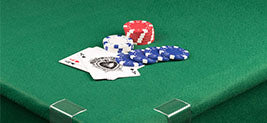
Hello. How do you make a cowboy hat out of felt? Do they use flat sheets stretched over a form to make it rounded or small pieces of foam glued together? If stretched, is there a tutorial? Please advise. Thanks.
JiM
Leave a comment